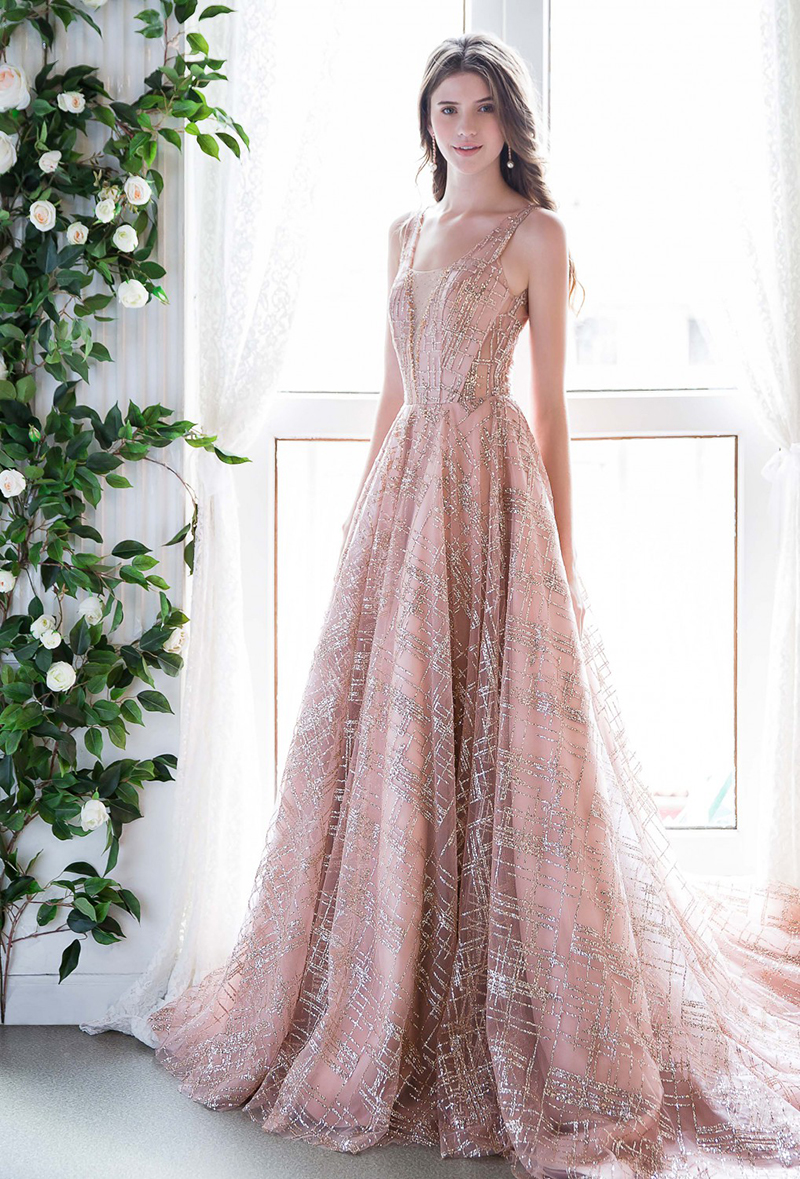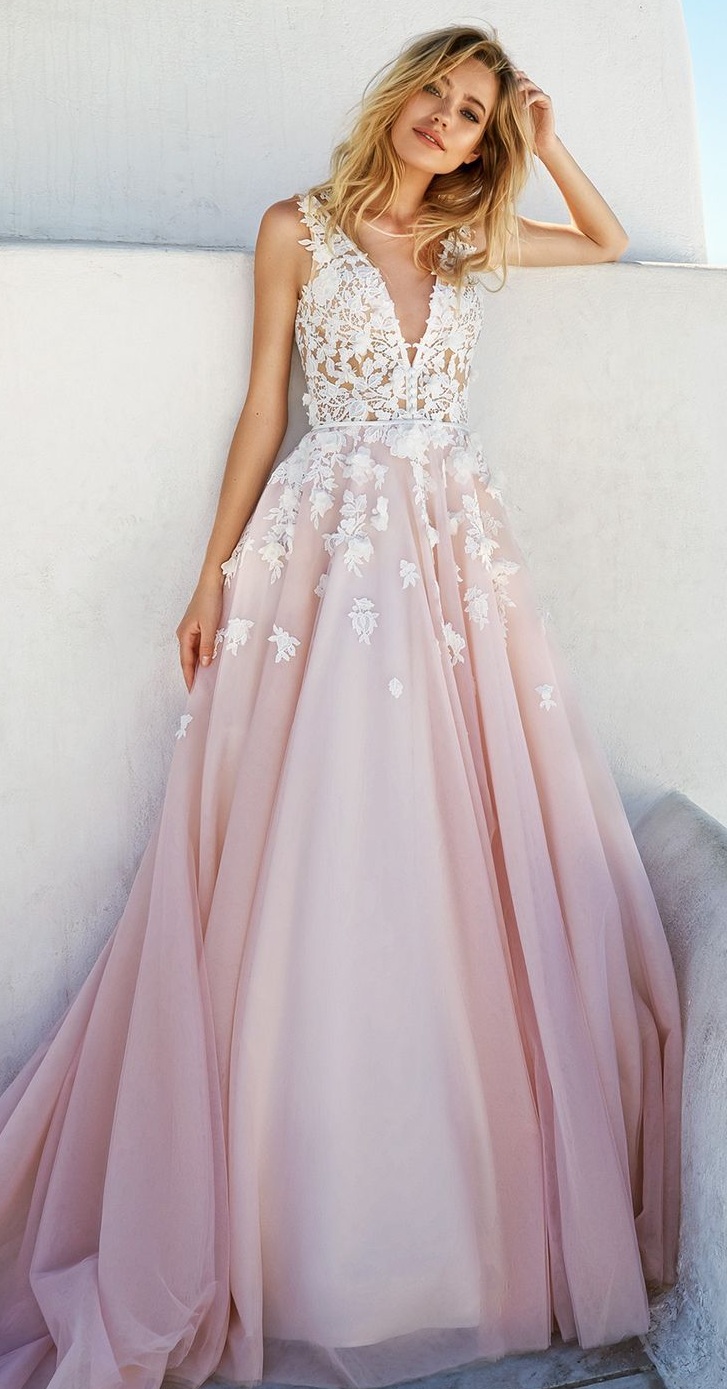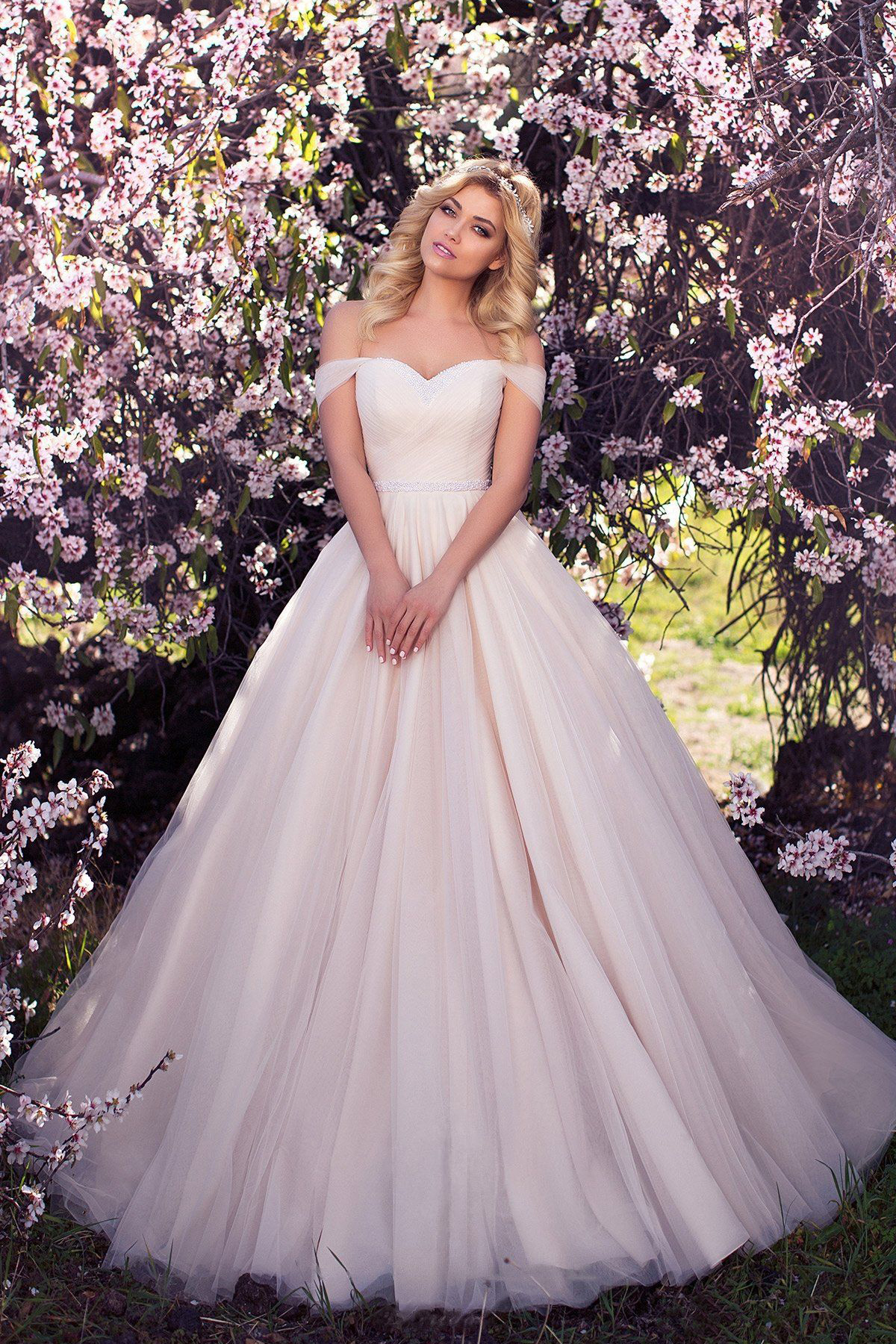I. Introduction

In the world of weddings, every detail matters. From the elegant invitation cards to the beautifully decorated venue, each element plays a crucial role in setting the tone and style of the ceremony. And perhaps one of the most important aspects in creating the perfect ambiance is the choice of wedding dress colors.
A. Importance of wedding dress colors in setting the tone and style of a wedding ceremony
The color of the wedding dress is a powerful symbol that can evoke various emotions and convey different messages. It sets the overall theme and atmosphere of the wedding, reflecting the personality and style of the bride. Whether it’s a classic white gown or a daring non-traditional choice, the color of the dress can significantly impact the overall feel of the ceremony.
B. Overview of the article’s content
This article will delve into the world of wedding dress colors, exploring both traditional and modern choices. We will discuss the historical significance of white dresses, along with their cultural associations. Additionally, we will showcase the beauty of off-white and ivory tones, which have gained popularity in traditional and vintage-inspired weddings.
Furthermore, we will explore the realm of modern wedding dress colors, focusing on the romantic allure of blush and pink hues. We will discuss their rise in popularity and their versatility in complementing various wedding themes. Lastly, we will touch upon the concept of unexpected colors, such as blue, lavender, and mint green, and how they can add a unique touch of personal style and individuality to the bride’s ensemble.
II. Traditional Wedding Dress Colors

A. White: The timeless symbol of purity and innocence
- Historical significance and cultural associations
Historically, white wedding dresses became mainstream in Western cultures during the 19th century when Queen Victoria chose to wear a white gown for her wedding. Since then, white has been associated with purity, innocence, and virginity.
- Variations of white in wedding dresses (ivory, diamond white, etc.)
While white is the most traditional choice, there are various shades of white that brides can opt for. Ivory, diamond white, and champagne are some of the popular variations that add depth and warmth to the overall look while still maintaining the traditional essence.
B. Off-White and Ivory: Embracing subtle variations and vintage aesthetics
- The popularity of off-white shades in traditional and vintage-inspired weddings
In recent years, off-white shades have gained prominence, especially in weddings with a vintage theme. These colors evoke a sense of nostalgia and add a touch of sophistication to the bride’s ensemble.
- Exploring the romantic charm of ivory-toned wedding dresses
Ivory, often considered a warmer alternative to white, exudes elegance and blends well with various skin tones. This subtle shade adds a romantic charm to the overall look while maintaining a traditional appeal.

III. Beyond Traditional: Exploring Modern Wedding Dress Colors
A. Blush and Pink Hues: Adding a touch of romance and femininity
- Rise in popularity and versatility of blush and pink wedding dresses
Blush and pink wedding dresses have witnessed a surge in popularity, with many modern brides embracing their romantic and feminine qualities. These colors can range from soft pastels to vibrant hues, offering versatility in complementing different wedding themes.
- Complementary color palettes and design elements to enhance the romantic theme
Pairing blush or pink wedding dresses with complementary color palettes and design elements can enhance the romantic theme further. Soft greens, dusty blues, and subtle metallic accents can create a harmonious and visually pleasing ensemble.
B. Unexpected Colors: Embracing personal style and individuality
- Exploration of non-traditional colors, such as blue, lavender, and mint green
For brides who seek to make a statement and showcase their personal style, non-traditional wedding dress colors like blue, lavender, and mint green offer a refreshing and unique twist. These colors allow the bride to express her individuality and create a memorable impression.
- Incorporating unique color choices to reflect personal preferences and wedding themes
By incorporating non-traditional colors into their wedding attire, brides can reflect their personal preferences and tie in the color scheme with the overall wedding theme. Whether it’s a beachside ceremony or a bohemian-inspired celebration, unexpected colors can add a touch of flair and make a lasting impact.
IV. The Influence of Cultural and Regional Traditions

A. Vibrant and Colorful: Celebrating cultural diversity
- Asian wedding dress traditions and the significance of red and gold
In many Asian cultures, red and gold are considered auspicious colors that symbolize luck, joy, and prosperity. Traditional Asian wedding dresses often feature vibrant shades of red and intricate gold embroidery to honor cultural traditions and bring good fortune to the newlyweds.
- African wedding dresses and the use of bold colors and intricate patterns
African wedding dress traditions vary across different countries and tribes but generally embrace bold, vibrant colors and intricate patterns. These dresses reflect the rich cultural heritage and convey a sense of celebration and joy, with each color and pattern holding its own symbolic meaning.
B. Traditional Western Influences: Exploring variations in Europe and North America
- Stylistic differences between British, French, and American wedding dress traditions
Wedding dress traditions in British, French, and American cultures differ in terms of style and color choices. British wedding dresses often feature classic and elegant designs, while French wedding dresses may showcase intricate lace and fine details. American wedding dresses tend to be more diverse, with brides opting for various styles and color choices.
- Unique color choices in regional traditions and their cultural symbolism
Within Western cultures, there are regional variations in wedding dress colors. For example, in Scotland, it is customary for brides to wear a white dress with a tartan sash to represent their family’s heritage. In some parts of Spain, brides traditionally wear black wedding dresses, symbolizing their devotion until death.
V. Embracing Non-Traditional Alternatives

A. The Rise of Non-White Wedding Dresses: Breaking away from tradition
- Celebrities and influencers embracing unconventional wedding attire
Celebrities and influencers have played a significant role in popularizing non-white wedding dress choices. From celebrities like Gwen Stefani opting for a pink wedding dress to social media influencers showcasing their unique and colorful wedding attire, non-white dresses have become more mainstream and accepted.
- Embracing individuality and personal style through non-white wedding dress choices
Non-white wedding dresses allow brides to express their individuality and showcase their personal style on their big day. From soft pastels to vibrant jewel tones, the possibilities are endless when it comes to creating a unique and memorable wedding ensemble.
B. Patterns, Prints, and Textures: Unleashing creativity and uniqueness
- Incorporating patterns, prints, and textures into wedding dresses
Traditionally, wedding dresses have been predominantly solid-colored, but there is a rising trend of incorporating patterns, prints, and textures into wedding attire. From delicate floral patterns to bold geometric prints, these elements can transform a wedding dress into a work of art.
- Tips for selecting and styling unconventional wedding dress designs
When choosing and styling unconventional wedding dress designs, it is important to consider the overall theme and style of the wedding. Pairing a patterned or textured dress with minimal accessories and a simple hairstyle can allow the dress to be the focal point. Additionally, working with a skilled designer or seamstress can ensure that the unconventional elements are executed beautifully.
In conclusion, cultural and regional traditions have a significant influence on wedding dress colors, with vibrant hues and intricate details representing cultural heritage and symbolism. However, there is a growing trend of embracing non-traditional alternatives, allowing brides to break away from traditional white dresses and express their individuality and personal style. From patterns and prints to unconventional color choices, brides now have more options to create a unique and unforgettable wedding attire.
